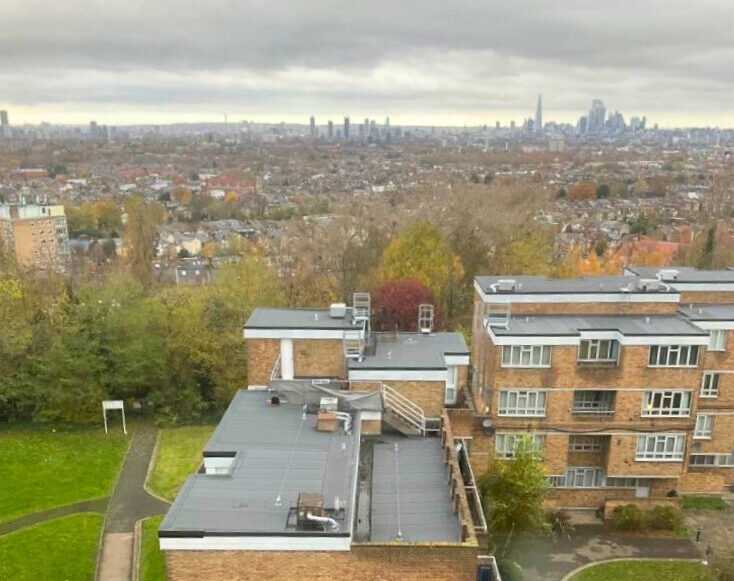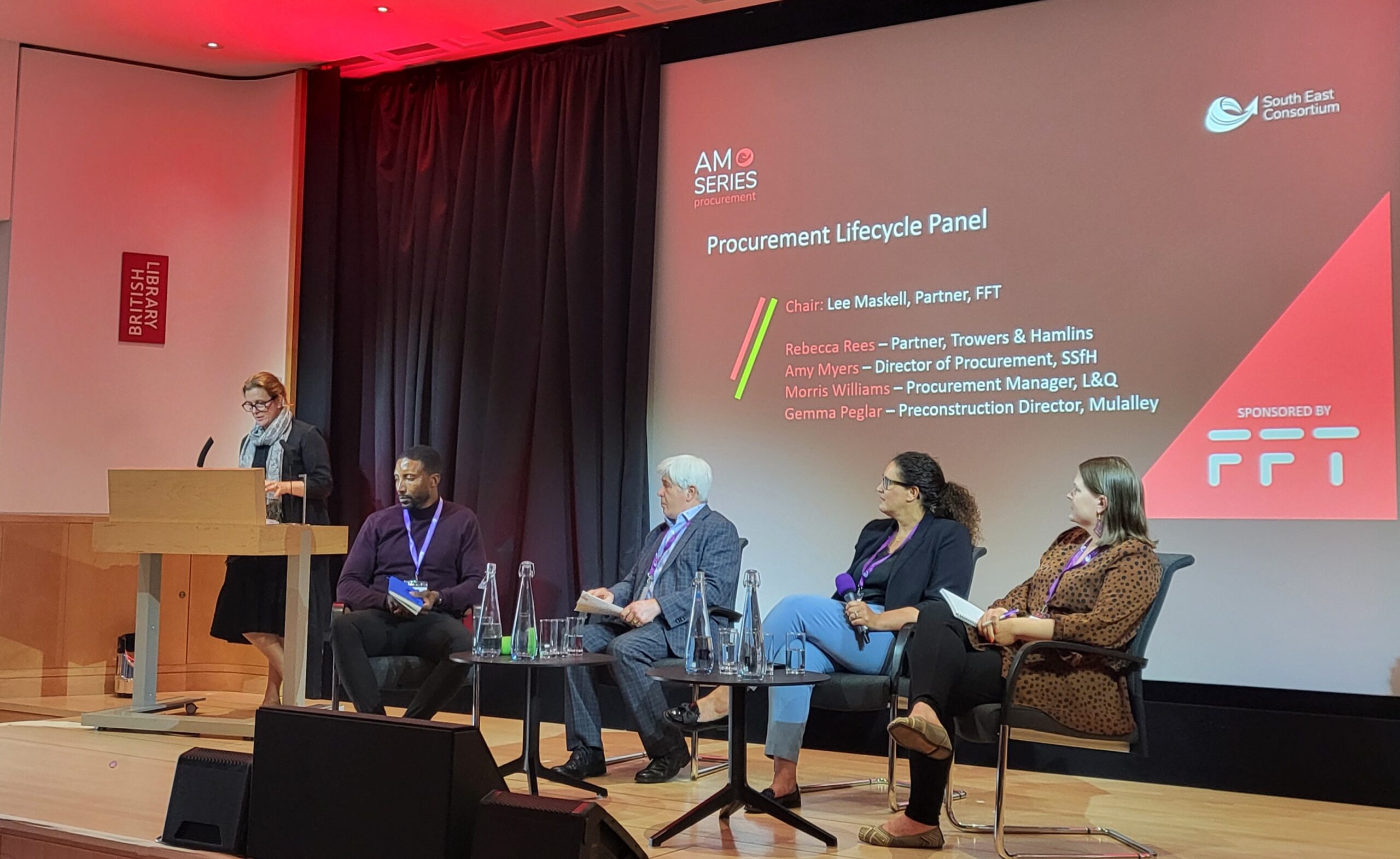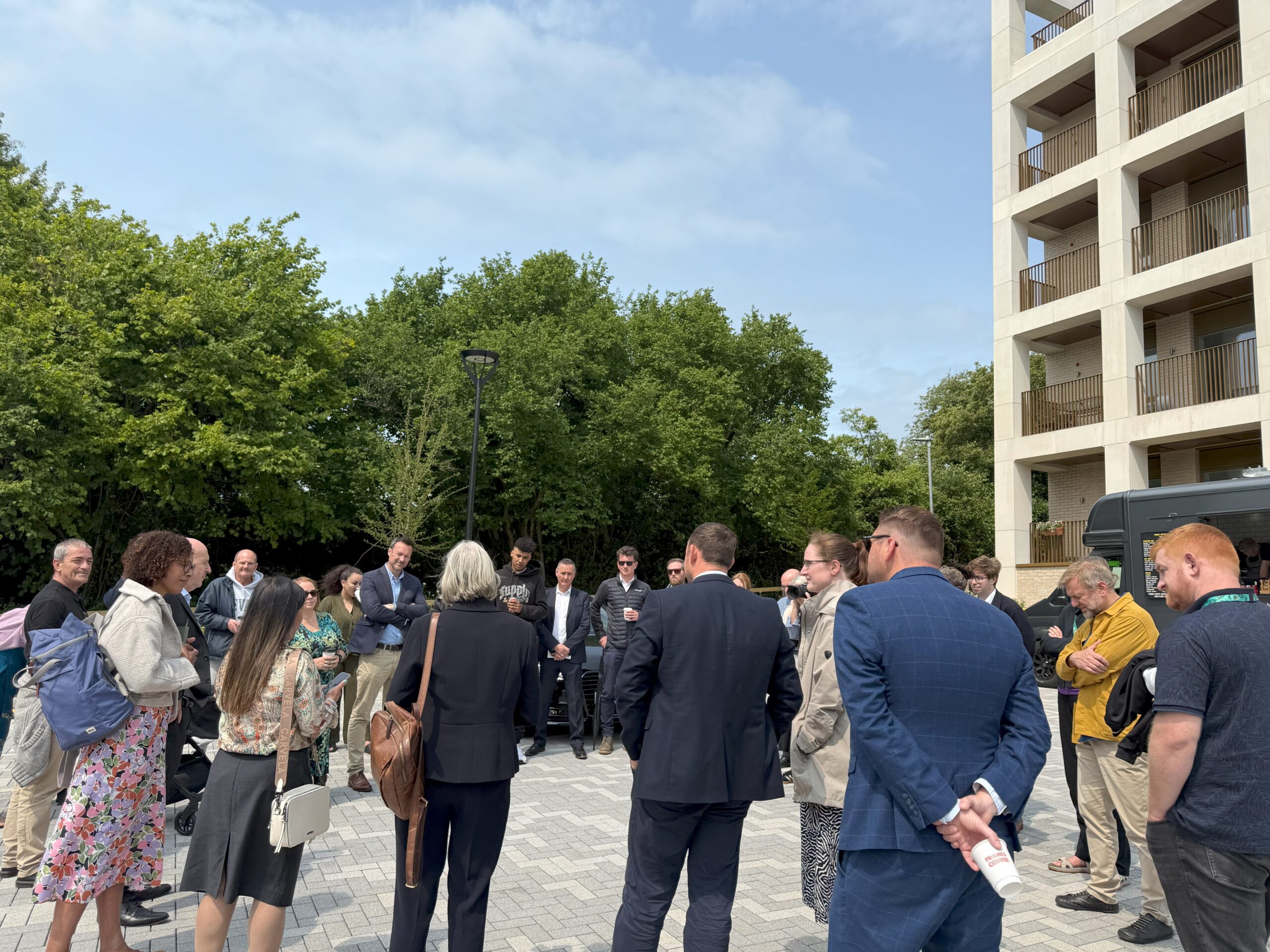RAAC – Helping Tackle the Concrete Crisis Head-on
7 September 2023
RAAC (reinforced autoclaved aerated concrete) has hit the news as a major building safety issue recently, with numerous schools taking the decision to close as a precaution pending investigations and risk assessments.
RICS regulated chartered surveying practice FFT, has been commissioned by major educational establishments and Diocesan boards to undertake desktop reviews and survey inspections to detect the presence of RAAC products, and to provide professional advice on risk management and remedial measures where a need is identified.
What is RAAC?
RAAC – reinforced autoclaved aerated concrete – is a system used mostly in public buildings such as schools and colleges, although it is also known to be present in hospitals and health centres, as well as offices, shopping centres and some residential housing.
The material was first introduced into the UK in the 1950s, and was used up until the 1990s, usually in pre-cast plank form to create walls, roofing, flooring and cladding.
RAAC differs from traditional concrete, due to it not having been mixed with aggregate and engineered using a chemical process that produces its notable air pockets and ‘bubbly’ texture. This formula results in reduced weight and improved thermal insulation characteristics compared to traditional dense concrete. RAAC additionally includes steel reinforcement.
What is the problem with RAAC?
The main problem with RAAC is that its porous nature coupled with poor design and installation quality of the integral reinforcement, means there an enhanced risk of reinforcement corrosion and thus spalling which can promote ‘bowing’ deflection and affects the structural loadbearing capacity, which can in extreme cases, lead to collapse.
Bowing of RAAC planks has also been identified where the original design has been altered through, for example the introduction of additional roof loads, application of dark-coloured waterproof (roof) coverings leading to increased expansion and issues with the loading of plank ends on supporting beams and walls.
Problems associated with reinforcement corrosion are more likely to arise where moisture is introduced over a long period of time, such as in the case of a roof or plumbing leak.
While RAAC panels exist in walls and floors, the greatest risk currently relates to its use in roof structures due to the potential risk and injury that could result from structural failure, as was highlighted by the collapse of a ceiling at Singlewell Primary School in Gravesend in 2018.
Because RAAC planks can be concealed above plastered or suspended ceilings, below roof coverings or behind other cladding or decorative finishes, it may be difficult to observe deterioration.
Buildings Likely to be affected by RAAC?
Current indications are that buildings most likely to be affected are ‘public’ buildings constructed as part of government / public sector building projects during the 1950’s – 1980’s, although this should not be taken as absolute as examples have been found in both earlier buildings (following alterations) and other more modern buildings.
So far most focus has been on schools, colleges, hospitals and civic buildings including courts, theatres and leisure centres, but some attention is now turning to public (council) housing schemes.
Buildings that are currently considered likely to present the highest risk, are those with ‘concrete’ flat roofs, which may display other pre-cast concrete components and/or other ‘system built’ characteristics.
“Typically, low-rise structures with flat roofs built between the mid-1960s and mid-1990s would be the most likely candidates to contain RAAC”.
Reflecting the desire to manage the risk of harm to children, and the experience of the Singlewell school, government priority has been given to the risk assessment of school buildings. FFT has been supporting the investigation programme for several months.
38% of school buildings (24,000) are past their estimated 30-year design lifespan, according to the National Audit Office. Recently, ministers announced they were fast-tracking the rebuilding of five hospitals said to have been constructed with “significant amounts” of RAAC, “given the risks they pose to patients and staff”.
Many schools have recently been advised to close, and some have required precautionary emergency measures to support potentially defective structures. Schools are also being advised not to drill or otherwise disturb anything they believe may contain RAAC, and to make any affected spaces ‘out of bounds’ until the appropriate safety measures have been put in place.
RAAC at risk – what are the warning signs?
Typical warning signs that RAAC is present and that deterioration may be in progress could include surface cracking, spalling / falling of concrete, roof / soffit bowing/deflecting and rainwater ponding on the roof.
Signs of water damage may display as discoloration, rust staining, or softness in the material.
What to do if you believe RAAC is present in your building?
If you believe RAAC may be present within your building, you should follow the official guidance provided by the Department for Education. This includes a ‘Quick Guide’ to use to identify whether the material may be present.
If you believe RAAC to be within your building, your next step is to appoint an appropriately qualified building surveyor or structural engineer to confirm it is definitely present. A RICS Chartered Building Surveyor (FRICS / MRICS) qualifies as ‘Appropriately Qualified’.
At FFT, we have been working closely with our clients in the education and housing sectors, carrying out both desktop reviews, management inspections and specialist diagnostic surveys to ascertain the presence of RAAC, its level of risk and management or remedial measures.
In cases where the material exists within the building, we provide fully tailored advice on the next steps. Every case involving RAAC is different, which is why an individual approach is vital.
The survey process
The first stage of the survey involves an initial visual inspection and report. If no RAAC panels are identified then this will be reported, and no further action will be required.
If, however, RAAC is detected, then a follow-up visit will be carried out to further inspect and assess risk and approach. A further report will then be prepared, which will set out the results of the investigation works and recommendations for further action to be taken.
The survey will incorporate a review of the Asbestos Register to ascertain which areas can be safely opened up. It may also call for an accompanying contractor to provide safe high level access, to remove plaster or ceiling panels, and to sufficiently open up the construction so that it can be inspected.
In the case of schools premises, at this point, there is usually an obligation for the estate holder to notify the Department for Education via the DfE Capital Portal. Other similar reporting arrangements may in time emerge for other types of portfolio holders.
What are the possible remedial steps?
Where cracks or other deterioration are identified, it may be possible to carry out repairs, without the need to replace the entire supporting structure.
However, due to the nature of RAAC, with potentially no warning signs before it fails, and with so many buildings exceeding the material’s lifespan, the safest solution is usually to fully replace it with an appropriate alternative system.
Why trust FFT with your RAAC survey?
At FFT, we have hands-on experience in carrying out RAAC surveys and reports, and contract managing remedial works. We are currently under instruction for numerous dioceses and educational trusts, health and housing clients.
Our specialists in this area are all RICS Chartered Building Surveyors (FRICS / MRICS), and all survey commissions are overseen at Partner level for added reassurance.
It is important to note that the assessment of RAAC is a highly specialised area within the surveying profession, and it is vital to ensure that those carrying out the surveys are suitably qualified and can demonstrate an appropriate level of skill and experience.
Should you believe that RAAC is present in your building, or you’d like more certainty that the risk can be discounted, please get in touch.
Contacts at FFT:
Partner Ian Richardson – Email [email protected]
Senior Associate Grant McFall – Email [email protected]
Associate Partner Richard Pell – Email [email protected]
Resources:





